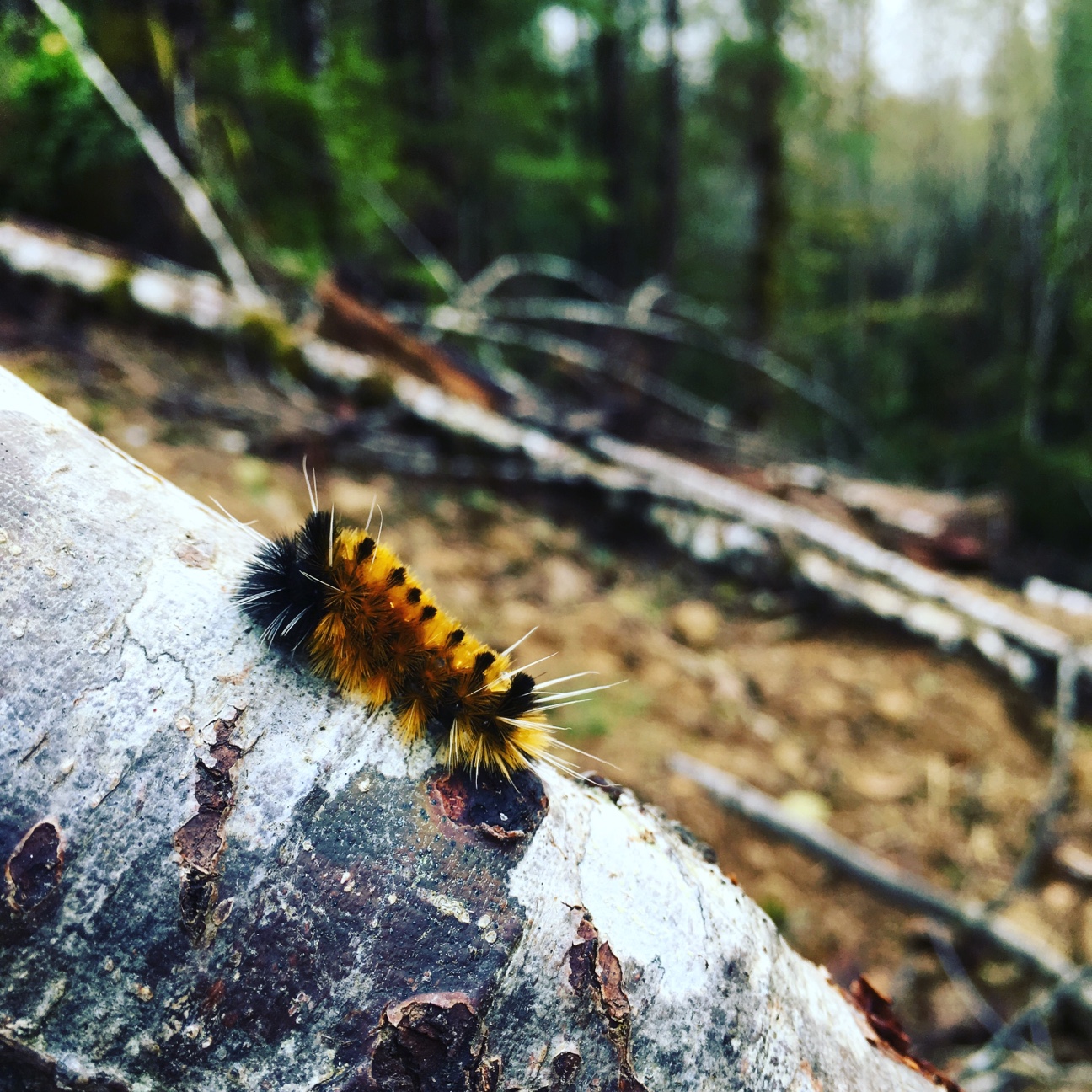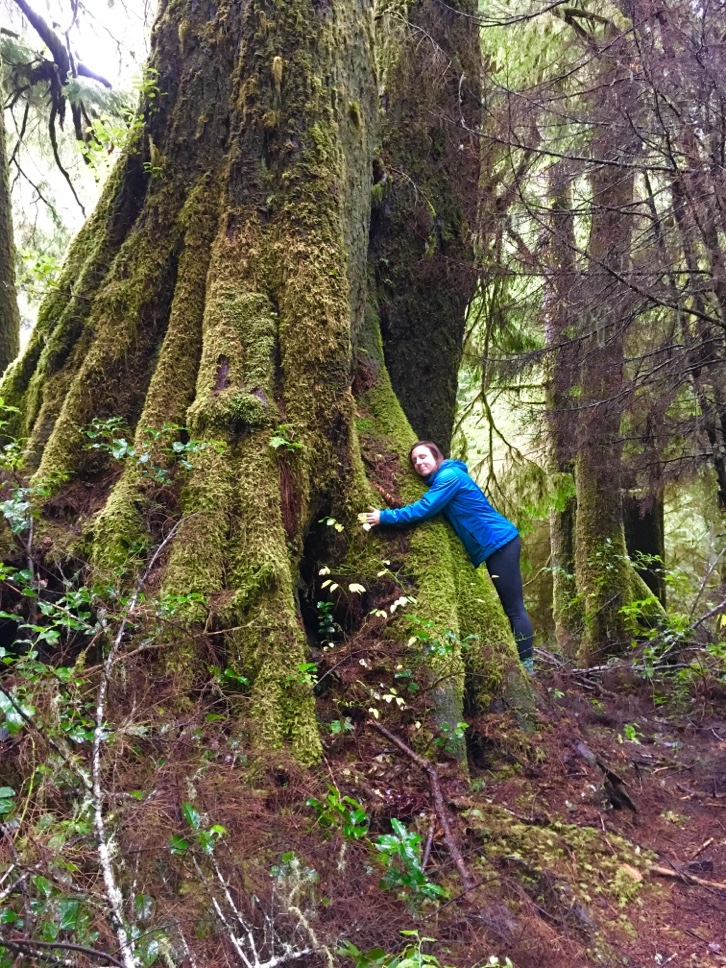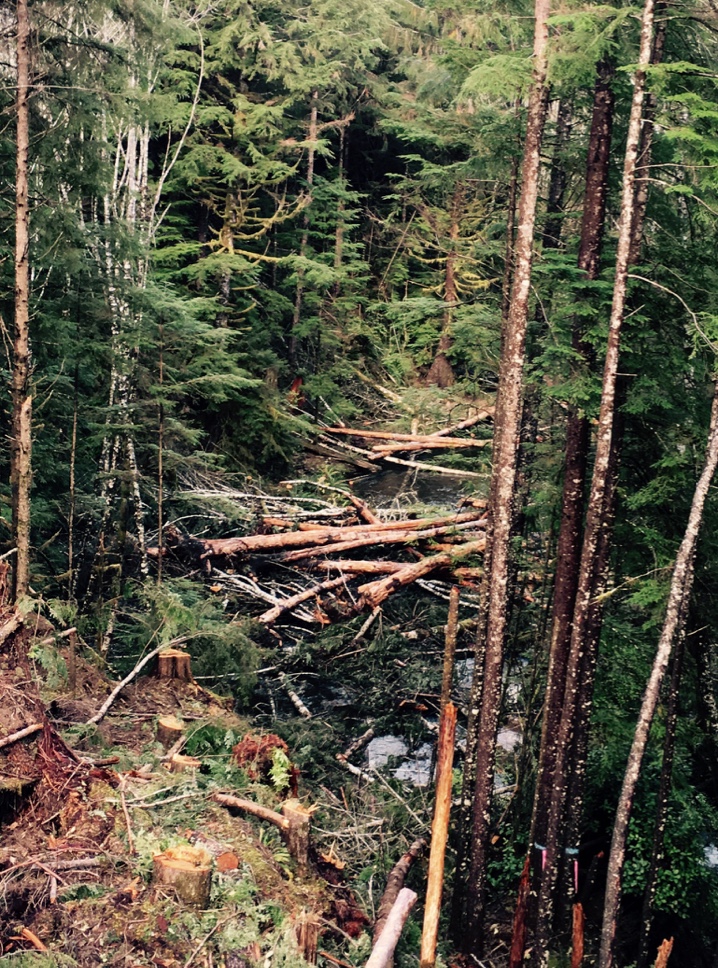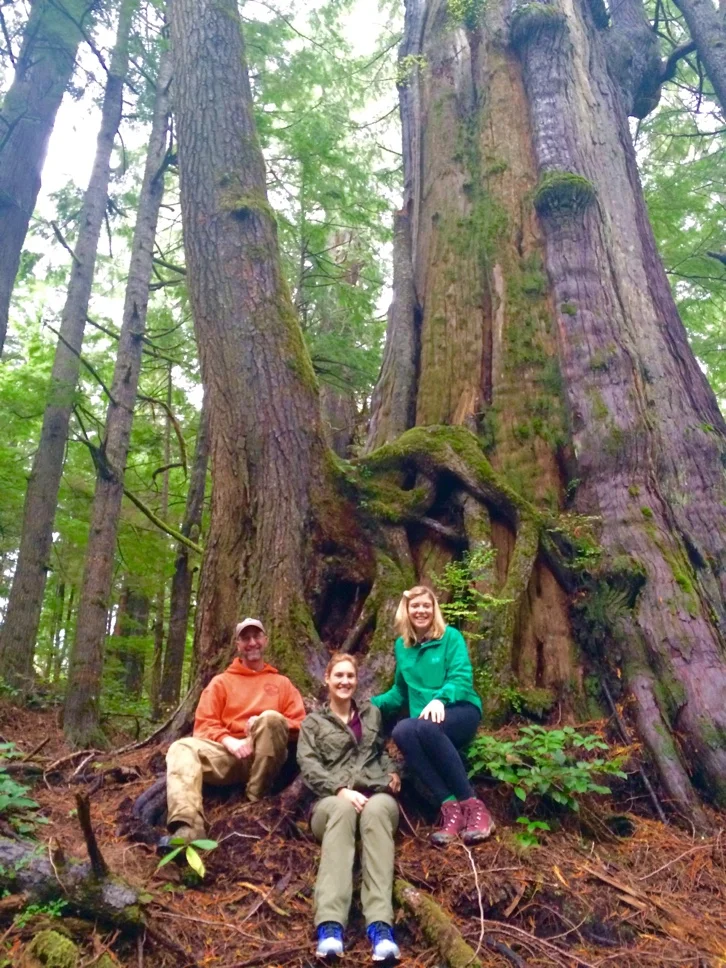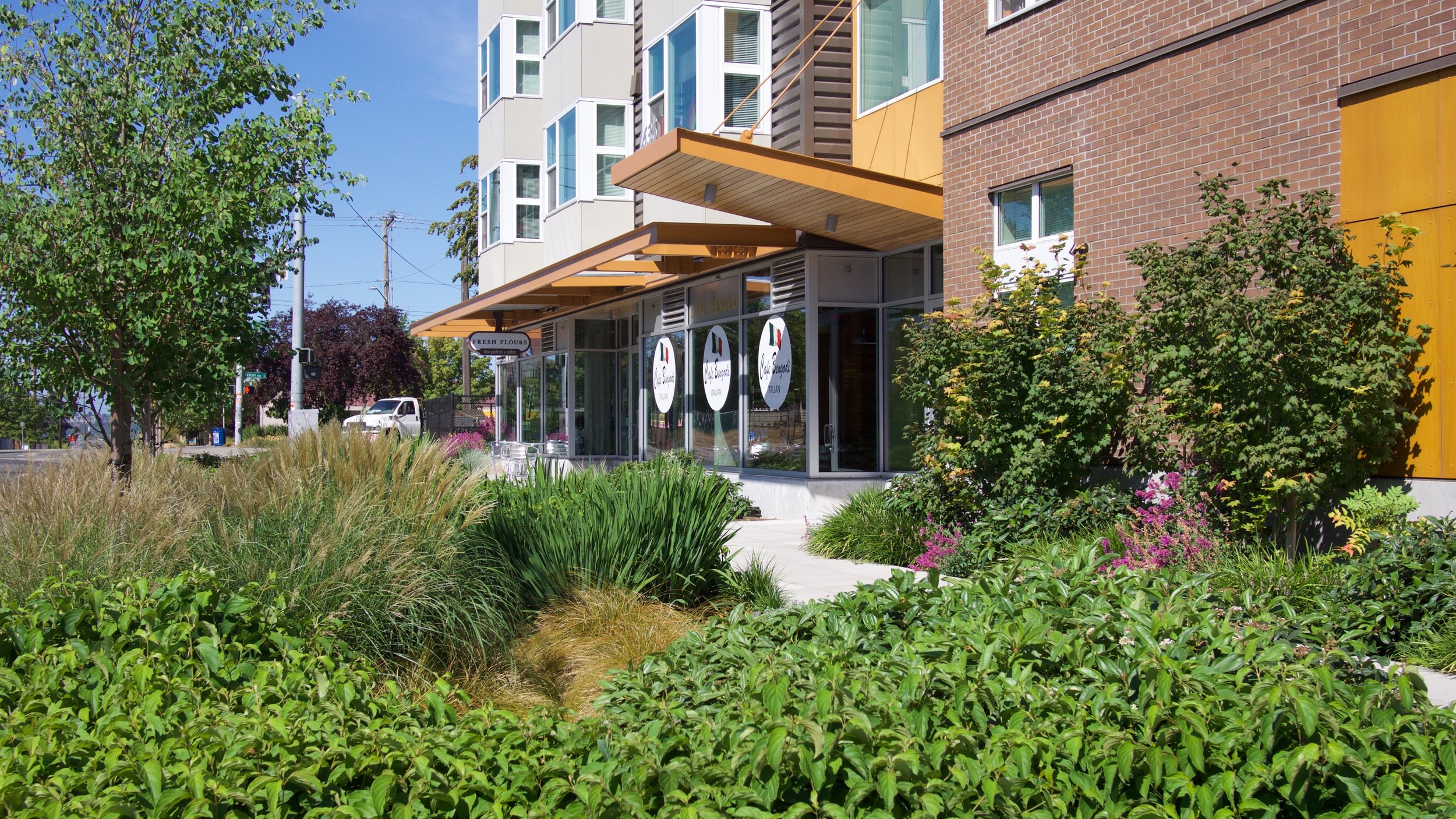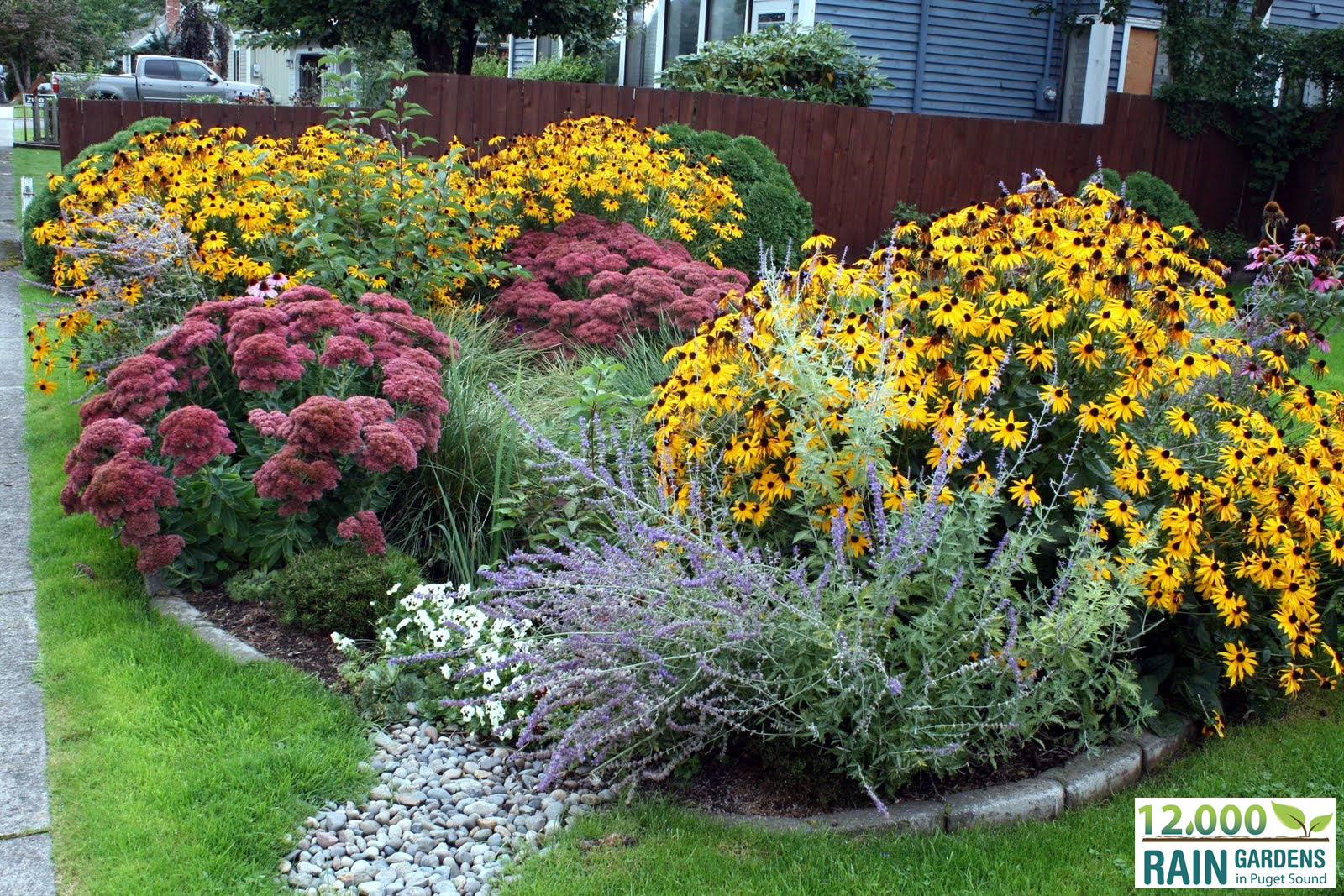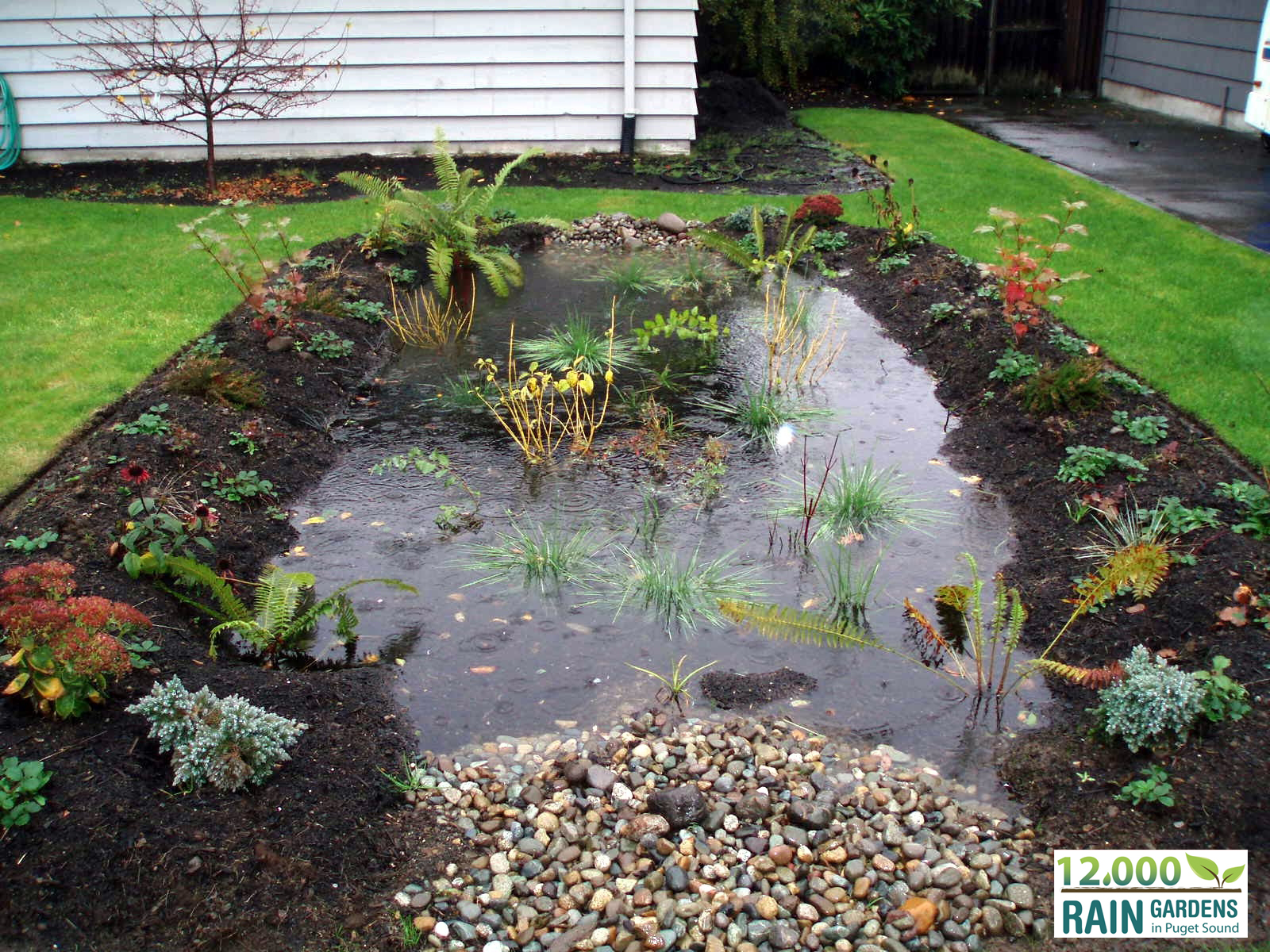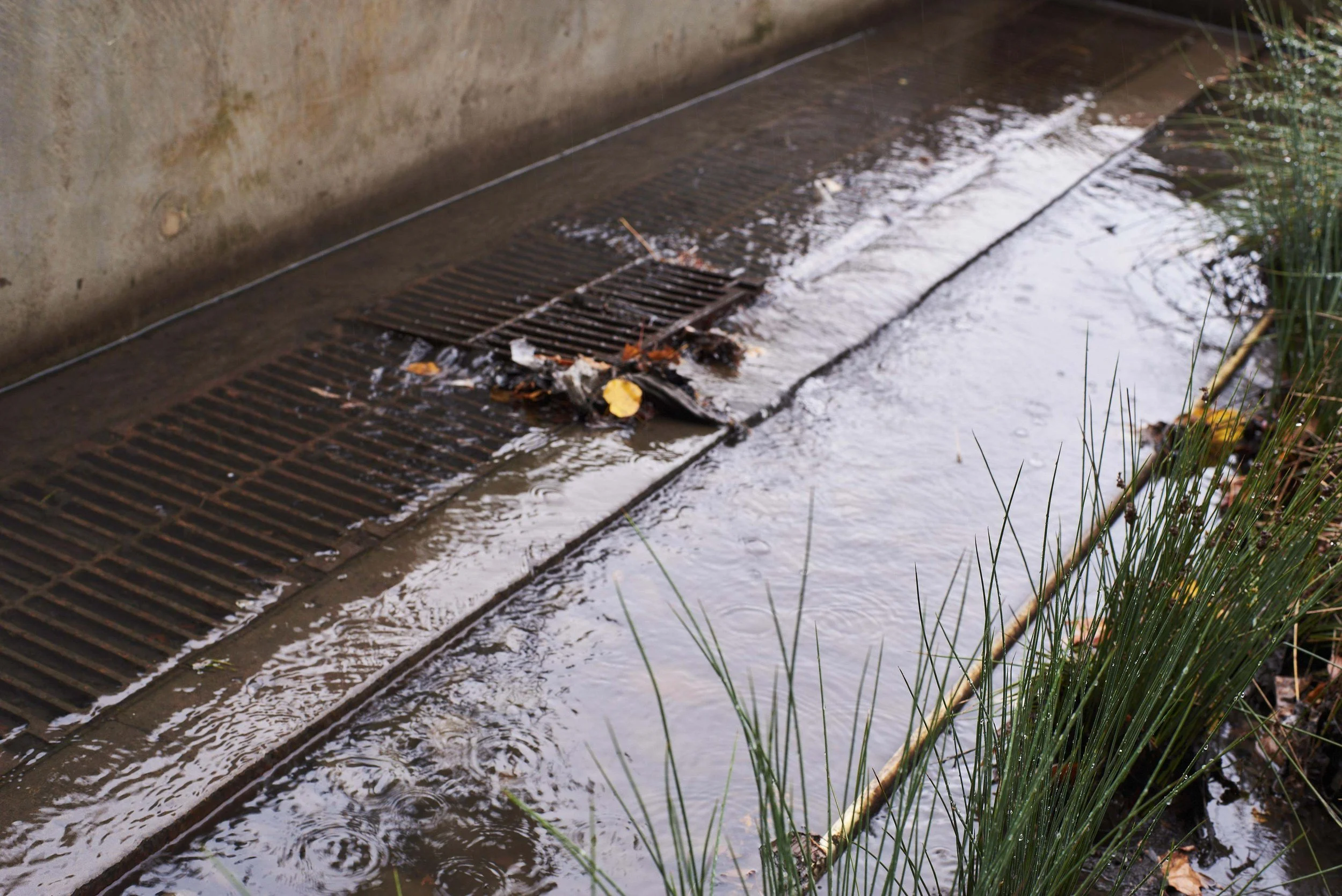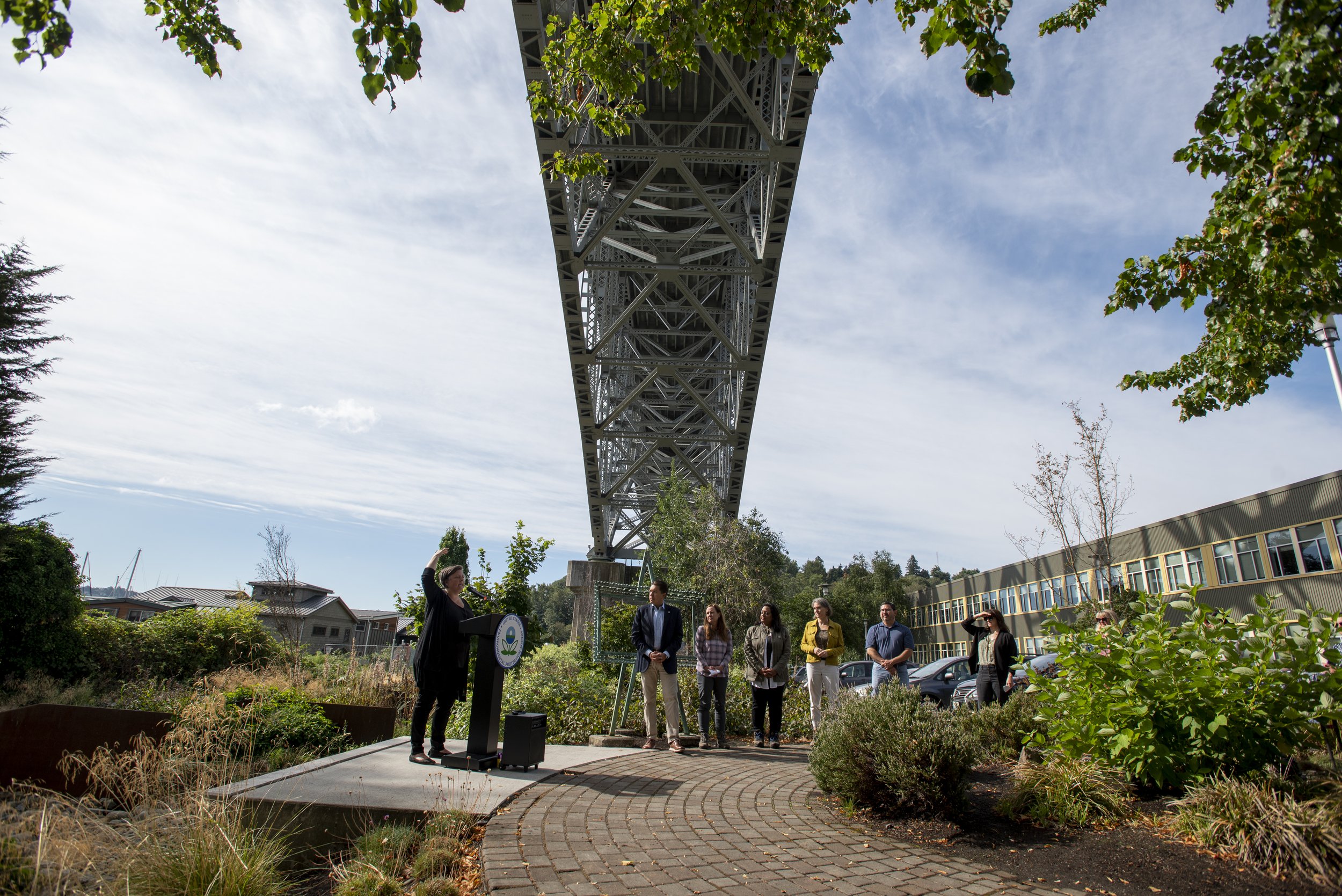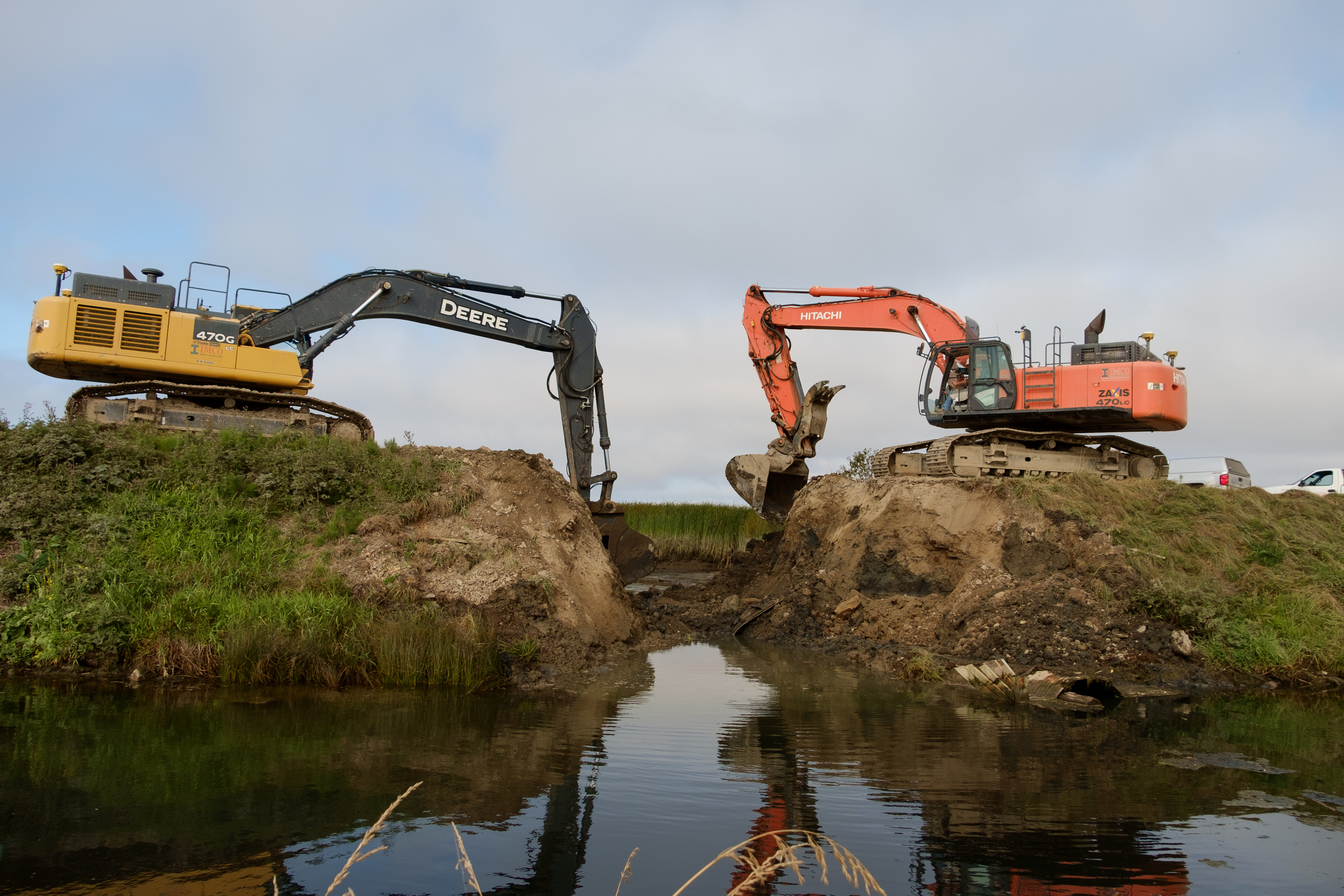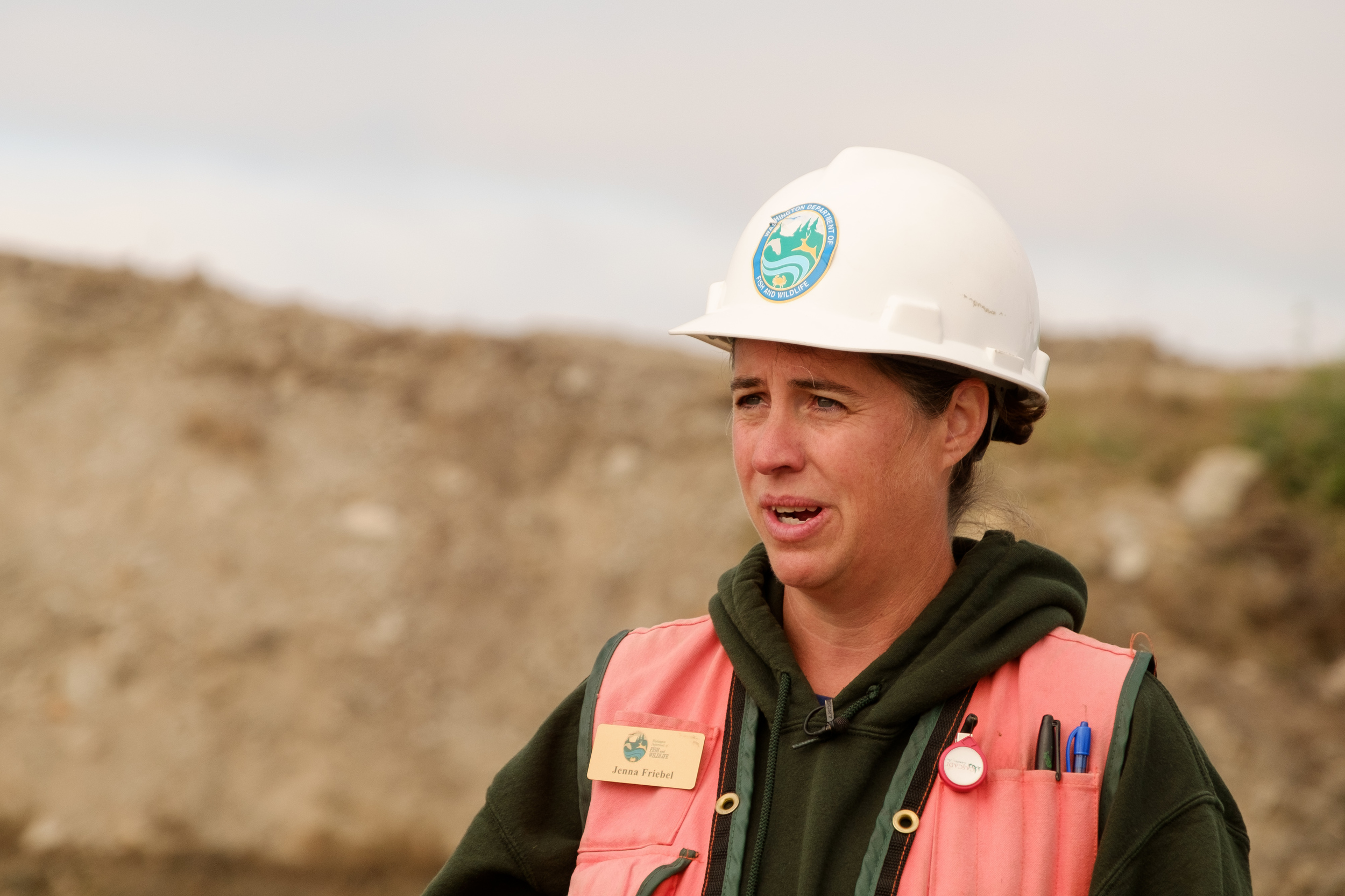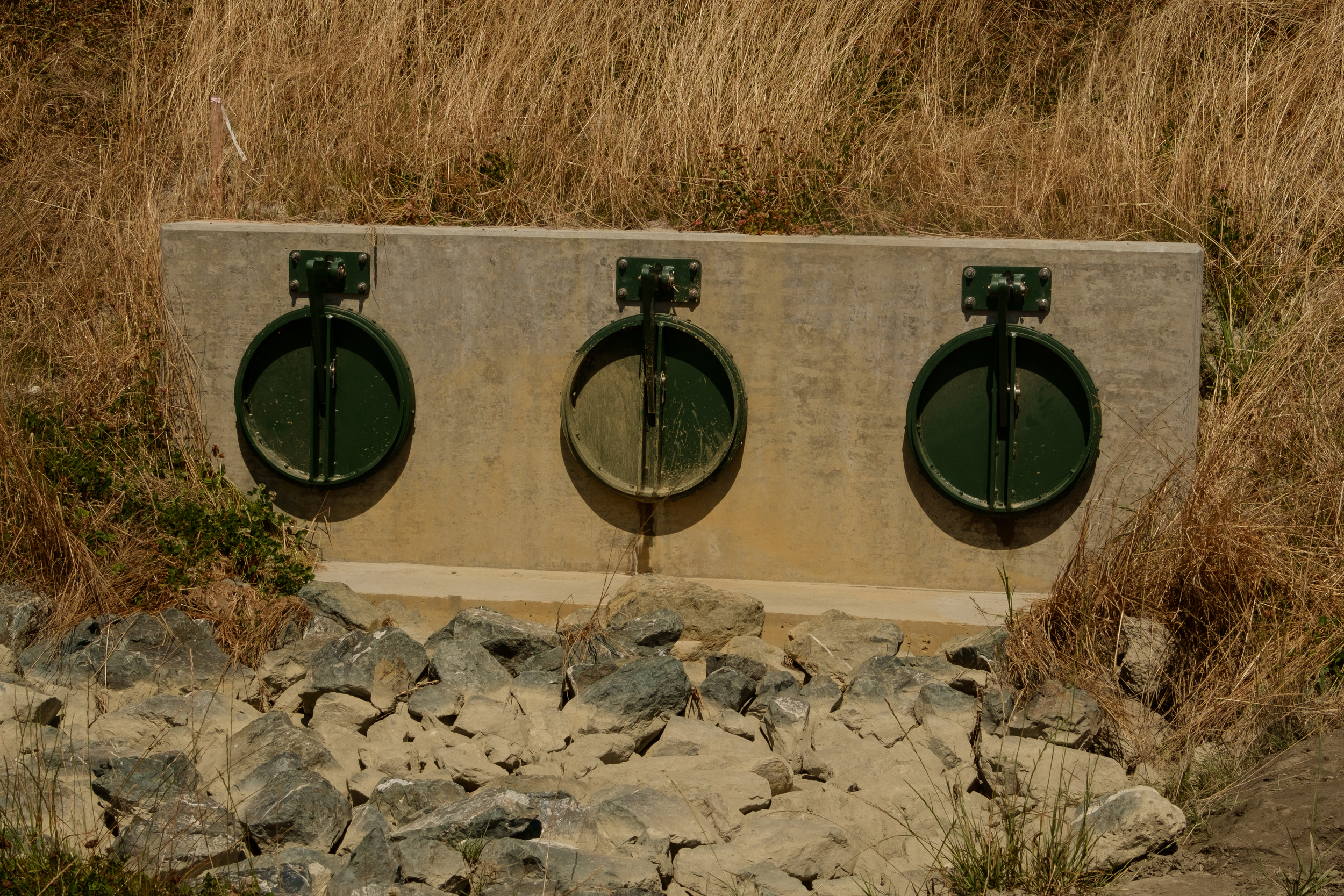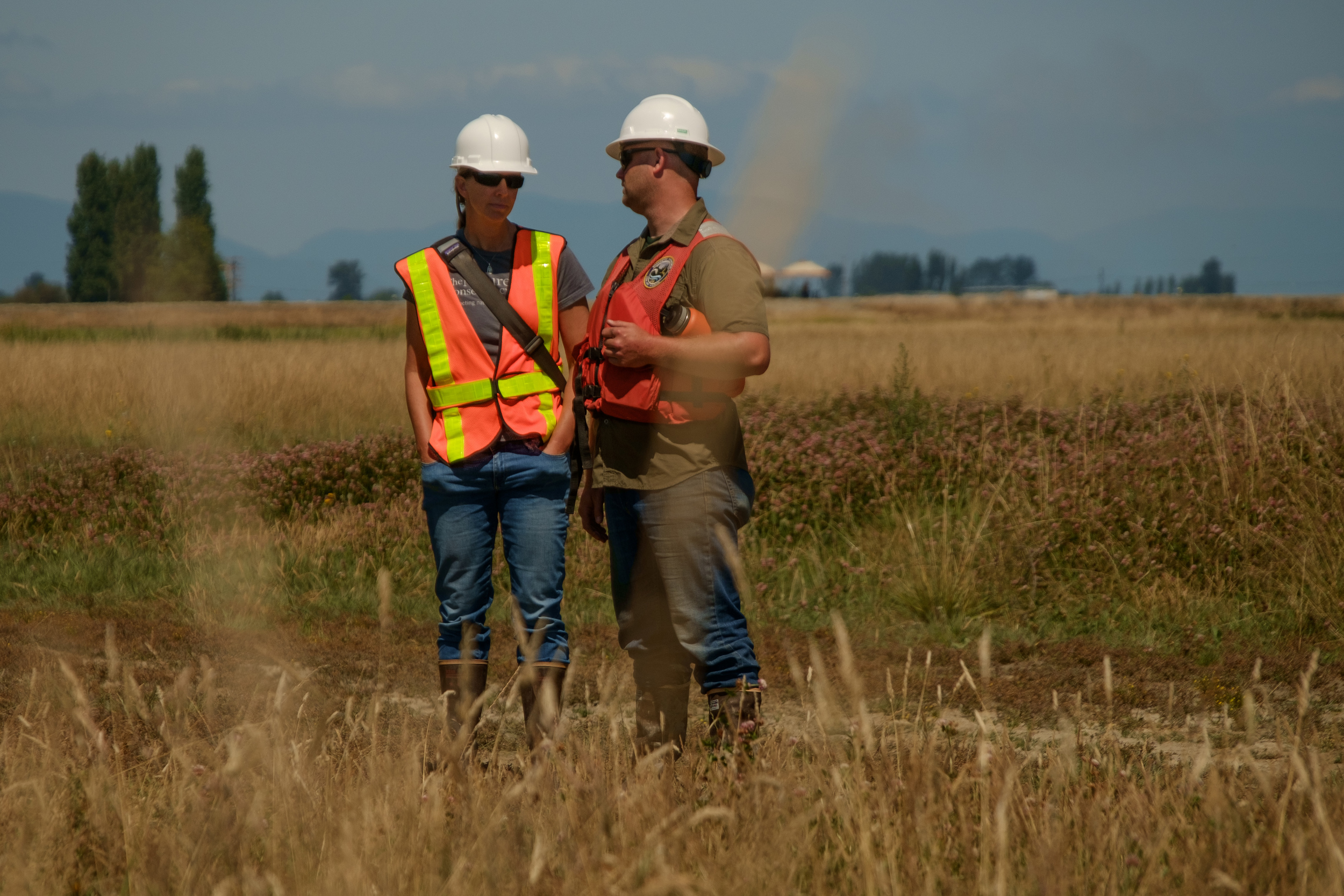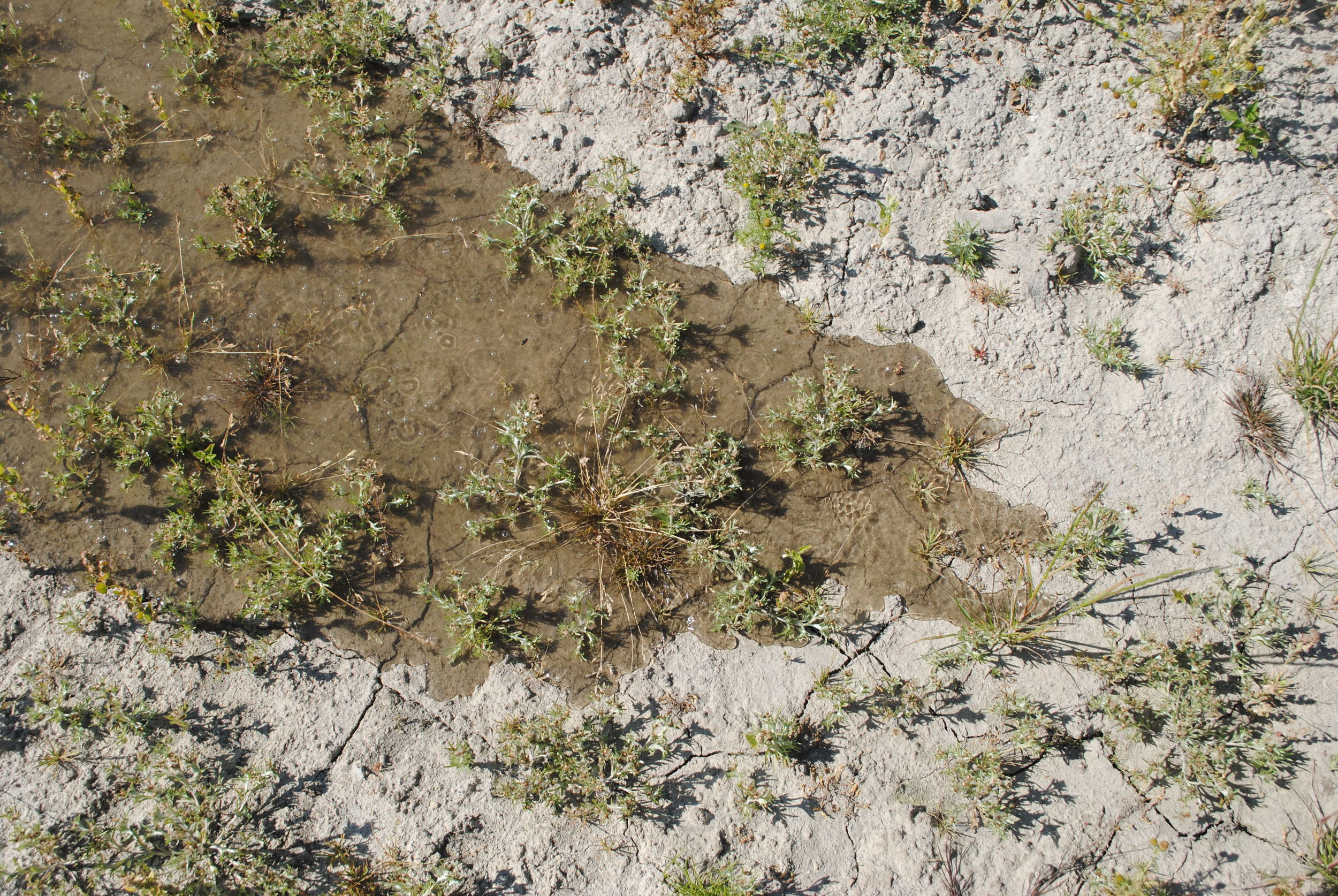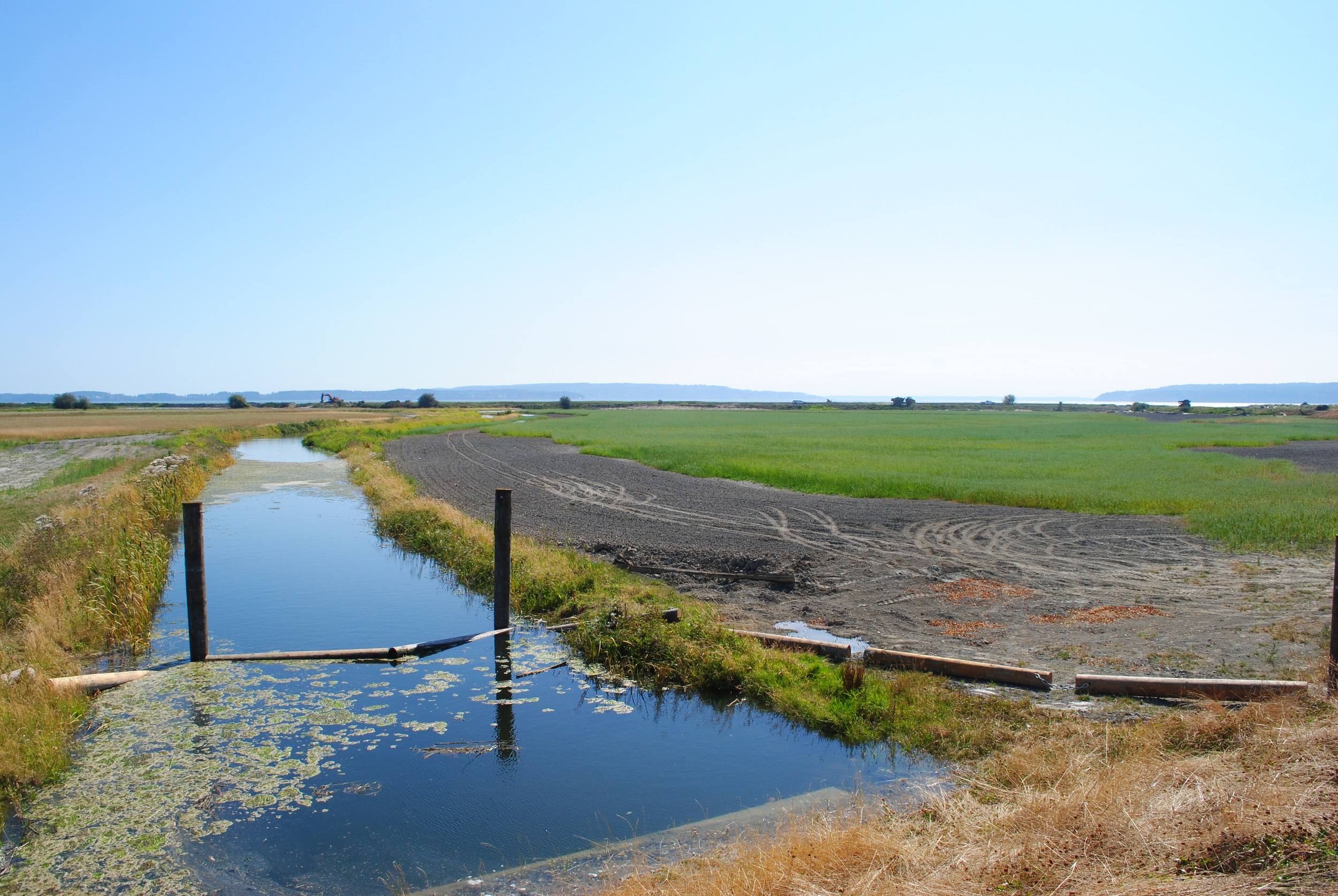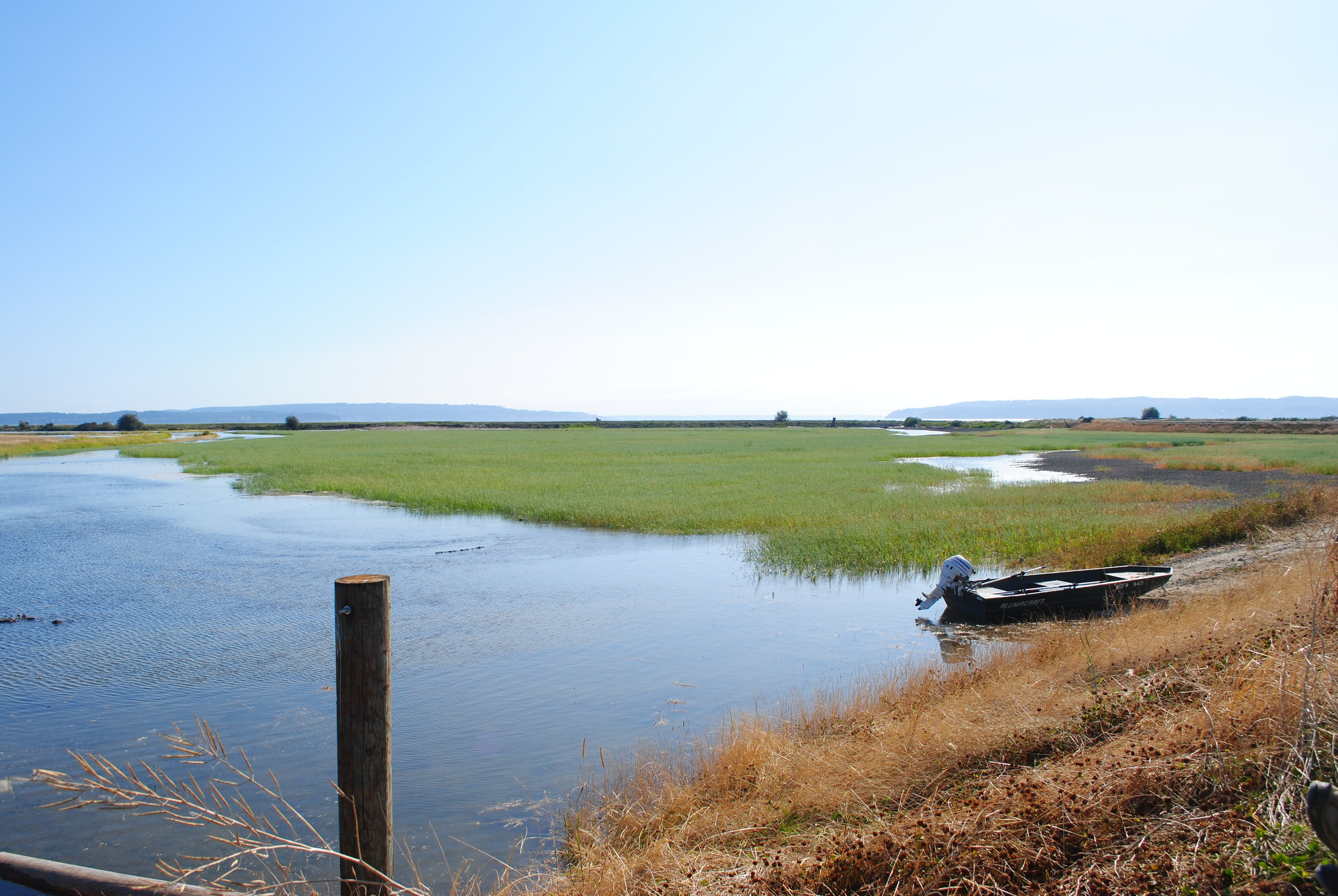The way of connection is revealed by water—snowy summits melting, forging rivers, winding streams and cutting wetlands to spill over a salty edge. Join Dr. Emily Howe, Ecologist of Aquatic Environments for TNC Washington, as she poetically details the interconnectedness of a watershed.
When Restoration Gets Explosive
Using dynamite for restoration may seem like a paradox, but at TNC’s Port Susan Bay Preserve, we explored dynamite as a way to create estuary channels. The inspiration behind this method was to see if explosives could reduce the ecological impact of channel creation in comparison to using heavy machinery.
Port Susan Bay Preserve: Where have all the Chinook Gone? (Part 1)
Port Susan Bay Preserve: Where have all the Chinook gone? (Part 2)
A Resource Guide for Fish-Friendly Infrastructure Funding
To celebrate World Fish Migration Day 2022 and in advance of upcoming funding opportunities from the Bipartisan Infrastructure Law, we have prepared some resources to help applicants better identify both grant programs and science resources to support strong proposals.
The 2022 Legislative Session Wraps Up With Exciting Achievements
This week, the 2022 Washington state legislative session concluded, with a few notable achievements for the environment in our state. Here at The Nature Conservancy in Washington, we built off the achievements from the 2021 session by securing investments and action in key climate and conservation areas.
Creating the Stormwater Heatmap: An Open-Source Tool to Track Pollution
The Stormwater Heatmap harnesses the power of big data to model where stormwater pollution is generated across the landscape — helping public municipalities plan for the future. As a living tool continually updated with the latest data, it’ll be exciting to see how communities, academics, and policymakers can use this to create lasting impact.
A Climate-Focused Transportation Package Will Transform Washington state
Positive Steps in Bristol Bay! Army Corps Denies Pebble Mine Permit
Video: Do Seattle Seawall Improvements Make for Happy Salmon?
From Trees to Seas: Marine Team Visit Ellsworth Creek
Written and photographed by Claire Dawson, Hershman Marine Policy Fellow
On our way to the Marine Resource Committee Summit in Long Beach, Washington, several members of the Marine Team here at The Nature Conservancy got the chance to visit forester, Dave Ryan, at Ellsworth Creek Nature Preserve. This 7,600 acre preserve encompasses an entire watershed, and links with the Willapa National Wildlife Refuge. Together these provide more than 15,000 acres of refuge to species like nesting marbled murrelets, cougar, black bears, elk, amphibians, and salmon.
Our visit began with a tour of the recent log jams that have been installed upstream on Ellsworth Creek. These jams, while appearing to be no more than piles of brush and logs thrown haphazardly across a stream, are in fact an important natural feature of creeks and rivers. For decades, woody debris was removed from rivers and streams to promote navigation, recreation and beautify river beds. However, recent research has shown us that removing debris is detrimental to fish habitat. Recent creek restoration efforts have therefore focused on rebuilding these essential features.
By forcing the water over, under and around them, log jams slow the water and allow historical flood plains around creeks and rivers to fill and pool with water, providing a more favorable environment for returning adult salmon and growing fry. Slowing water flow also allows the deposit of larger sediment like rocks and rubble further upstream, creating the habitat needed for salmon to build redds and lay their eggs. These newly established woody areas also lower stream temperature by providing shaded environments, and somewhere to hide. Properly engineered, they also serve to reinforce creek beds, preventing erosion.
The Ellsworth Creek Preserve also encompasses an area of old growth Sitka spruce and Western red cedar. Following a one-mile trail down into the valley, we walked among giants, some over 800 years old to what’s known as Ellsworth Beach. With the recent rains and cooler weather, the group had hoped to see that the Chum had arrived in this part of the creek. Alas, the Chum prefer to arrive in solitude, and waited until the following day to show up in droves.
Our visit to Ellsworth served as a wonderful reminder of the interconnectedness of nature – and the various elements that work together to create habitat that is ‘just right’ for some of our region’s most beloved species. Conservation progress has implications far beyond the lands we walk on, and progress made on land has rippling effects all the way out to the deep blue sea.
Visit Ellsworth Creek Preserve
Rain Gardens: A Beautiful & Simple Solution
Written by Stephanie Williams, Program Coordinator
Photo Cred: Zoe van Duivenbode & 12,000 Rain Gardens
What exactly is a "rain garden"?
A rain garden is a bowl-shaped garden specially designed to catch rain water from roofs and pavement. It helps to slow down the water and clean it naturally before it runs off into our streams, lakes, rivers, and ultimately Puget Sound. Without simple, natural solutions like rain gardens, rain water picks up nasty chemicals and bacteria from our pavement and built environment. This contaminated water then rushes too quickly into larger bodies of water, where it has very harmful impacts. Untreated polluted runoff can kill an adult salmon in as little as three hours!
Although a rain garden’s main purpose is to prevent the number one polluter of Puget Sound, these natural beauties have other benefits as well. Here are just a few to get you started:
1) Installing a rain garden can be a simple step to beautifying a community space or adding curb appeal to your home. The different colors and textures from stones, grasses, flowers, and plants in your rain garden will break up a boring landscape. Some communities in Puget Sound have already decided to take out unsightly and unnecessary pavement in order to add rain gardens. What a great way to instill pride and a sense of community in a local public space!
2) By using native plants, rain gardens can also promote biodiversity and attract wildlife such as birds, butterflies, and bees. Of course these creatures are fun to look at, but they are also important pollinators for growing many of our favorite local foods.
3) Since rain gardens slow the flow of water, they also prevent flooding. As climate change gives our region more intense rain events, rain gardens are a plan for resiliency.
4) Rain gardens are a great way to give your neighbors yard envy! Check out this video about the unquestionable community support for installing rain gardens in Snohomish County!
Polluted run-off is a very serious threat to Puget Sound waters. Rain gardens are such an easy solution for tackling this issue and reaping additional benefits along the way. If you’re still curious, one way to understand a rain garden is to see one first hand. Click here to see where there might be a rain garden in your area.
Learn more about our work in Cities
Find out how you can win a rain garden makeover
Witnessing Change at Fir Island Farm
Written & photographed by Julie Morse, Regional Ecologist
For thousands of years it was an estuary. Then for 100 years it was farmland. Now, it’s estuary again.
More or less halfway between the mouths of the North Fork and the South Fork of the Skagit River, Fir Island Farm sits on the edge of Puget Sound with stunning views of Mount Baker. For the last 100 years it has produced potatoes, corn, wheat and other crops and drawn visitors from far away every winter to see the flocks of thousands of Snow Geese that congregate here in the winter
The Skagit River itself defines this place. It’s the largest river entering Puget Sound, fed by the glaciers of Mount Baker and the North Cascade peaks it supports all five species of Pacific Salmon. For Skagit’s Chinook Salmon, a threatened species protected under the Endangered Species Act, estuary habitat at the mouth of the river is a limiting factor in their recovery. Tidal marsh habitat here is a quarter of what it was historically. The Fir Island Farm restoration of 131 acres alone is projected to increase smolt production by at least 65,000 every year.
From a farmer’s perspective, it’s always painful to see farmland lost, whether it’s for salmon restoration or development of a new sub-division in rural areas – the impact on their bottom line is the same. Farmer’s need a critical landmass to maintain a viable economy, and particularly in the Skagit -located halfway between Seattle to the South and Vancouver to the North, development pressure in recent years has encroached from all directions. Add the importance of the Skagit estuary for salmon recovery projects, and combined the pressures on this prime lands are enormous.
And yet, local farming groups support the Fir Island Farm restoration because the project design includes critical improvements to their infrastructure. A state-of-art pump house and new setback dike will provide improved drainage capacity and flood protection for future sea level rise and storm surge conditions thus serving as a model for much of Western Washington. This project is also supported because it enables the local diking districts’ to make repairs and do maintenance on their flood and drainage systems. It also prioritizes restoration of state owned public lands, rather than private farmland.
The Fir Island Farm restoration project is a model of TNC’s approach to conservation and restoration in the complex and populated landscapes of Puget Sound. Not only does the project design include drainage and flood improvements for local farmers, it also retains a portion of farmland to manage for Snow Geese. The project design accommodates future sea level rise and is designed to protect the adjacent lands from coastal storm surge, is a model for adapting to climate change. Designing and implementing complex multiple benefit projects like this is no small feat; and our hats go off to WDFW’s Project Manager Jenna Friebel and her team.
Monday afternoon as we stood on the new dike and watched the first flood tide in 100 years return to Fir Island Farm, I think all of us TNC staff felt somewhat in awe, and incredibly humbled. Humbled to be alongside such a large group of partners - all who have had some piece in making the project happen. And in awe of how dynamic this place is. What we witness today is just a snapshot in time; it’s a work in progress.
Now it’s time for Mother Nature to take over. To start excavating new channels and bringing in large wood to create habitat complexity for salmon fry, to restore sediment flow that will create rich muddy intertidal stopover sites for migratory shorebirds, and continue restoring this incredible piece of the Skagit estuary.
LEARN MORE ABOUT SKAGIT VALLEY
All About Orcas
Written by Zoe van Duivenbode, TNC Intern
Photo by Walt Kochan; Joel Rogers
June is officially Orca Month! These marine mammals are so magnificent they deserve a whole month filled with orca appreciation and fun educational events! Recently, orcas have been coined as the first non-human species whose evolution has been influenced by each group’s unique cultural differences, such as hunting methods and vocalization. While certain groups of orcas snack on sting-rays and squid, other groups, like the local Southern Resident Killer Whales exclusively feed on chinook salmon and other fish!
For the entire month of June, dedicated orca lovers and various organizations unite to help spread the word about the rapidly declining population of the Southern Resident Killer Whales. Between the years of 1995 to 2001, the Southern Resident Killer Whale population decreased by 20% and as of December 2015, our resident pods reached a total of 84. One of the most detrimental threats to our underwater neighbors involves the reduction of chinook salmon populations and their habitat. The Orca-Salmon Alliance, The Center for Whale Research, and the Orca Network are just a few organizations that are hosting educational events highlighting the important relationship between the Southern Resident Killer Whales, salmon and a healthy Puget Sound ecosystem over drinks, picnics, storytelling and music. Visit The Orca Month page to find all the fun events happening near you!
The Nature Conservancy is hard at work protecting both habitat and food supply for the Southern Resident Killer Whales. TNC’s efforts to decrease the amount of toxic stormwater runoff that drains into the Puget Sound will help create a cleaner home for all marine life, including orcas! Check out how TNC’s plans to solve stormwater issues in our cities to help increase our region’s salmon population, which in turn, increases our Southern Resident Killer Whale population!
















